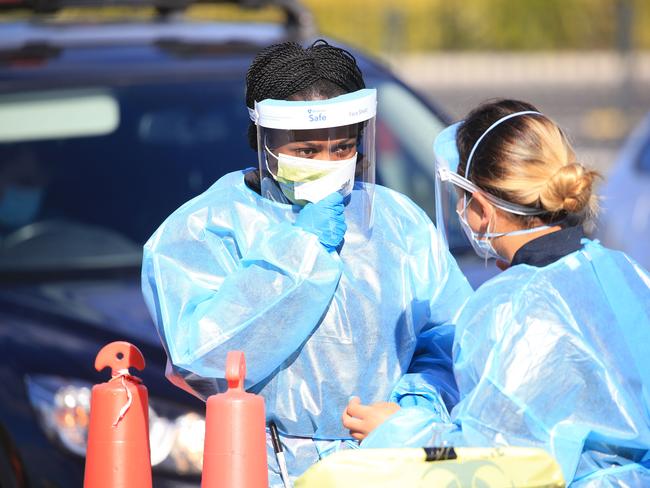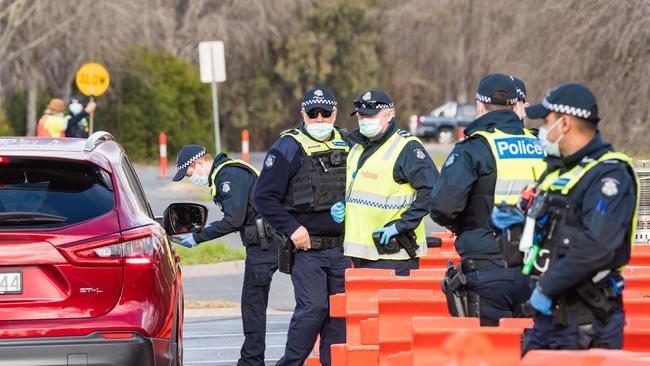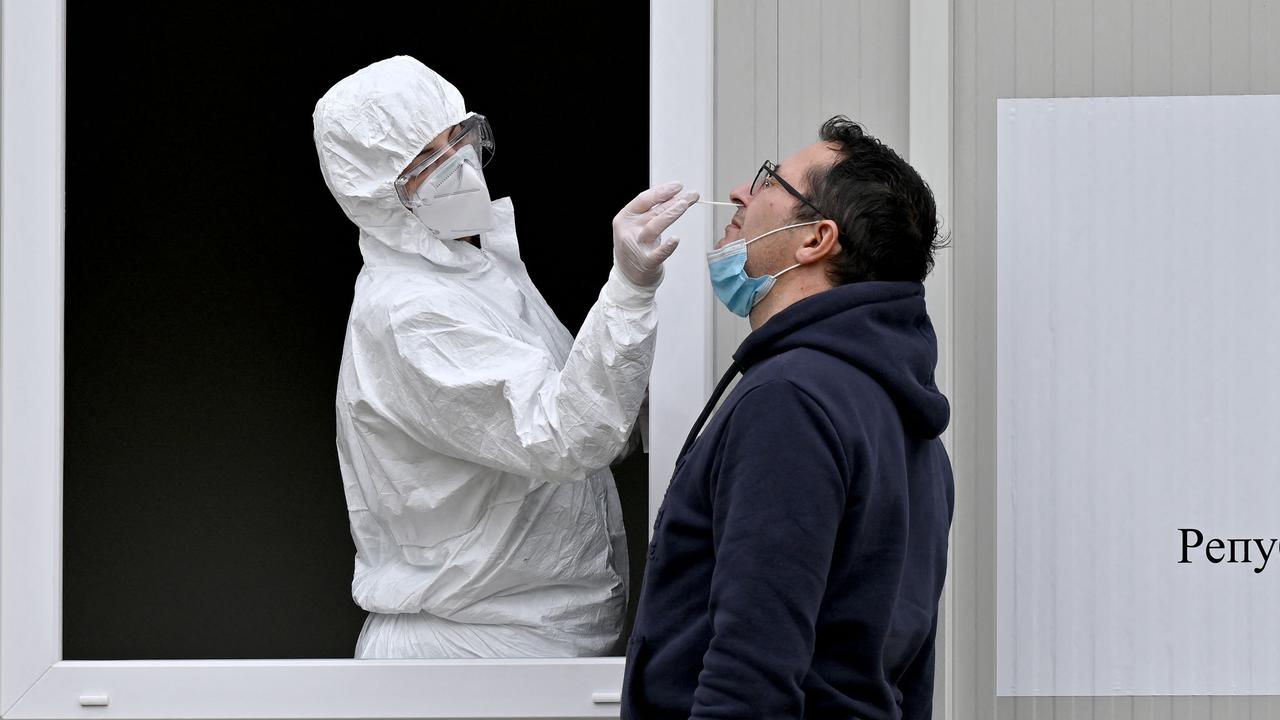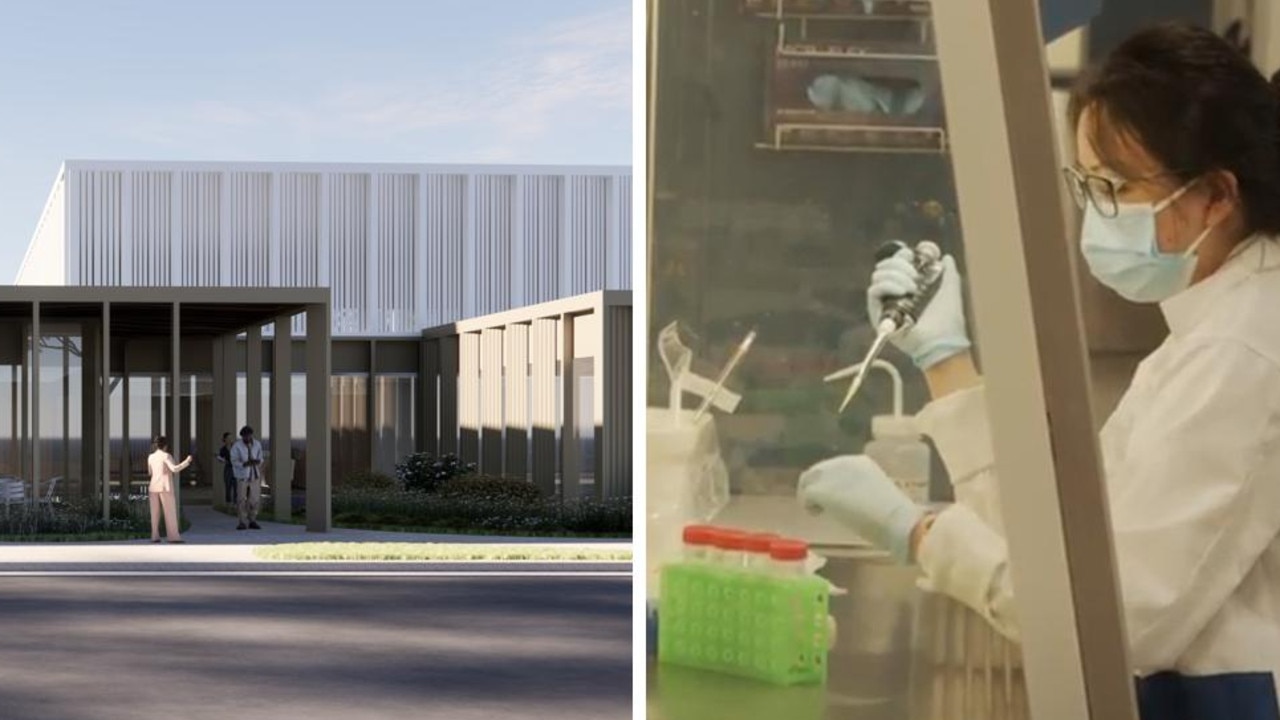Border closures, lockdowns and travel restrictions across Australia
Victorians who quarantine interstate need to obtain a new permit that comes with an updated Covid test requirement. See the latest on the state of our borders.
Coronavirus
Don't miss out on the headlines from Coronavirus. Followed categories will be added to My News.
Victorians will now need a new “departing hotel quarantine permit” if they complete two weeks’ isolation interstate.
The state’s chief health officer implemented the new changes on Thursday night in a bid to tighten Victoria’s border controls and prevent coronavirus slipping into the state.
The permit will require a day 17 test after arrival into Australia.
Health Minister Martin Foley said a day 21 test would also be “strongly recommended” under the new scheme.
“It is about making sure that we further strengthen our border arrangements against the threat of interstate incursions, particularly the prospects of incursions through hotel quarantine,” he said.
“We know that in other states, anywhere in Australia, including our own state, how well the new Delta variant of concern can get around communities.”
The new permit replaced the green zone permit for people who had completed hotel quarantine interstate.
Read on to see the state of play across Australia:
VICTORIA
Anyone entering Victoria from another state must apply for a permit.
NSW-Victoria border bubble residents must also obtain a permit.
Border bubble residents can cross the Victorian-NSW border for five reasons:
- Necessary goods and services, including medical care;
- Care or other compassionate reasons;
- Work (whether paid or voluntary, including for charitable or religious purposes);
- Education (including childcare or early childhood services);
- Receiving a Covid-19 vaccination;
Those in the SA-Vic border region do not need a permit in most cases. You can find out if you require one here.
However, residents can only enter Victoria for the same reasons stated above.
Victorians who have completed two weeks isolation interstate are now required to obtain a “departing hotel quarantine permit”.
The permit will require a day 17 test after arrival into Victoria.

A number of local government areas in the Northern Territory including the City of Darwin, City of Palmerston, Litchfield Council, Wagait Shire, Belyuen Shire, Dundee, Bynoe, Charlotte, Cox Peninsula, and the Municipality of Katherine including Tindal have been classified as “orange zones”.
Anyone who has been in one in the last 14 days before entering Victoria must isolate upon arrival, get a Covid test within 72 hours of arriving and stay isolated until a negative result is returned.
New Zealand is also a “red zone”.
Only returning Victorian travellers can obtain a “red zone” permit, and they must quarantine for 14 days upon arrival and get a Covid test within 72 hours, and again on day 13.
NSW and the ACT are “extreme risk zones”. Victorian residents and nonresidents who have been in either in the last 14 days can only enter the state if they have an exemption, exception, or a valid permit, which are only provided in rare circumstances.
NEW SOUTH WALES
Travellers from QLD, SA and Victoria need to complete a travel declaration to enter NSW.
Anyone who has been to a venue of high concern must follow testing and self isolation requirements.
Greater Sydney is in lockdown, and the shutdown affecting regional NSW has been extended until at least September 10.
Anyone in NSW cannot travel more than 5km from their home for shopping, exercise and outdoor recreation.
People in the LGAs and suburbs of concern can exercise and shop within 5 kilometres of their home — but they can’t leave their home for outdoor recreation.
People in Greater Sydney who wish to travel to regional NSW for one of the following reasons must have a permit, which will be made available at service.nsw.gov.au
*authorised workers from the LGAs and suburbs of concern
*inspecting real estate — anyone inspecting real estate must now genuinely need a home to *live in (they can’t inspect investment properties).
*travelling to their second home — only 1 person can travel to their second home if they’re using the home for work accommodation or if the home requires urgent maintenance
See how far you can travel in NSW now under the lockdown:
However, from Monday September 13, some restrictions will be eased for residents who are fully vaccinated against Covid-19.
- For those who live outside the LGAs of concern, outdoor gatherings of up to five people (including children, all adults must be vaccinated) will be allowed in a person’s LGA or within 5km of home.
- For those who live in the LGAs of concern households with all adults vaccinated will be able to gather outdoors for recreation (including picnics) within the existing rules (for one hour only, outside curfew hours and within 5km of home). This is in addition to the one hour allowed for exercise.

QUEENSLAND
Queensland has declared Victoria, NSW, and the ACT as Covid-19 hot spots.
On Wednesday, August 25, Queensland announced two-week pause on arrivals entering the state from Covid-19 hot spots with the extraordinary measure restricting entry to medical purposes and bereavement matters.
Queensland has blocked entry for those who have been given exemptions to relocate to Queensland amid heightened pressure on hotel quarantine facilities, which the premier said was being “stretched to the limits”.
The new rule applies to those planning to enter from NSW, Victoria and the ACT where growing outbreaks have led to border closures.
The Sunshine State has also introduced its tough measures from QLD-NSW border residents.
Residents of the border zone will only be able to enter Queensland if they need to obtain essential goods they cannot “reasonably obtain” in NSW, or for essential work.
Anyone entering the state must complete a Queensland entry pass.
More information can be found here.
SOUTH AUSTRALIA
South Australia has closed its border with Victoria, NSW and the ACT.
Essential workers travelling into the state from high-risk jurisdictions — currently NSW, Victoria and the ACT — must have received at least one vaccination dose before entering.
South Australian residents who are in these jurisdictions and wish to return must apply for an exemption.
Anyone who has been in Greater Brisbane, or the NT’s Katherine local government area in the past 14 days are subject to level three requirements, meaning:
- They must complete Covid-19 test on day one, five, and 13.
- They must Quarantine until a negative Covid-19 test result.
- They must not enter or remain in a high risk setting in South Australia for a period of 14 days after their arrival.
- They cannot enter Covid Management Plan events or an event at which more than 1000 people are present for a period of 14 days after their arrival in South Australia
There is a 70km buffer zone in place for those living on the Victoria-SA border.
Permitted purposes for travel are: Employment or education; providing care and support to or receiving care from another person; obtaining food, petrol or other fuel or medical care or supplies; obtaining a COVID-19 vaccination; recreational or competitive sport.
WA and NT travellers are allowed but must have Covid tests on day 1, 5 and 13, and must self-quarantine until receiving their first negative result.
Travellers coming from New Zealand or the Cook Islands have to quarantine for 14 days upon arrival and complete a Covid-19 test on days one, five and 13.
You can find more information here.
TASMANIA
The ACT, NSW, Victoria, and New Zealand have been declared ‘high risk’ zones and therefore no one from these states can enter Tasmania unless they have special permission.
Certain areas and premises in the NT and Queensland have also been declared high risk, while the rest of the Territory remains low risk.
People that have entered high risk locations anywhere in Australia are not allowed to enter Tasmania, unless they are approved as an essential traveller.
South Australia and Western Australia are both currently deemed low risk.
Tasmania also declared New Zealand a “high-risk” area late on Wednesday, placing border restrictions on anyone – including Tasmanians – considered non-essential travellers, as well as quarantine restrictions for anyone granted essential traveller permits.
More information can be found here.
AUSTRALIAN CAPITAL TERRITORY
Those wanting to travel to the ACT face different rules depending on what jurisdiction they are coming from.
You can find out what applies to you here.
Canberra’s lockdown has been extended and will now last until at least September.
Residents can only leave home for the following reasons:
– to undertake essential work or study, if you cannot work or study from home or remotely
– to attend usual childcare arrangements, where parents or guardians need to undertake essential work or study
– to shop for essential groceries, medicine and necessary supplies
– to attend to medical or health care needs including compassionate requirements, and looking after the vulnerable
– to attend usual childcare arrangements, where parents or guardians need to undertake essential work or study
– to attend a facility to receive a COVID-19 vaccination, where you are eligible for a vaccination in the ACT, an appointment has been booked, and you are not in isolation or in quarantine
– to exercise outdoors, limited to one hour per day
General retail will be closed and hospitality venues will only be able to operate takeaway services.

Mandatory mask wearing will also be reintroduced. They must be worn everywhere outside a person’s home unless they are undertaking “rigorous” exercise.
Mr Barr said the short and immediate lockdown is the best path to avoiding a longer lockdown.
NORTHERN TERRITORY
The ACT, NSW, Greater Melbourne have been declared hot spots.
Anyone who has been in these areas in the past 14 days or attended a public exposure site cannot enter unless they have proof of residency, qualify for an automatic exemption or have received CHO approval.
Transit through Melbourne, Brisbane, Gold Coast and Cairns airports is still allowed.
All interstate arrivals to the Northern Territory must fill in a border entry form.
WESTERN AUSTRALIA
Anyone that has been in NSW, Victoria, QLD, or the ACT in the past 14 days is not allowed to enter WA unless they have an exemption.
South Australia has been deemed “low risk”, meaning travellers will need to quarantine for 14 days at a suitable premises, or at a government-approved facility. They must also take a Covid test within 48 hours of arrival and on day 12 of quarantine.
Arrivals from Tasmania are deemed ‘very low risk’ and do not face quarantine. therefore do All travellers must complete a G2G pass registration and declaration.
NEW ZEALAND
The trans-Tasman bubble has been closed due to the soaring number of cases of the Delta strain in NSW. The quarantine-free travel arrangement between Australia and New Zealand has been paused until September 18.



